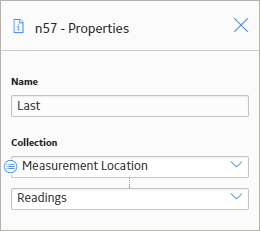The Properties window for a Last node contains the items that are described in the following table.
|
Item |
Description |
Notes |
|---|---|---|
|
Collection section |
Specifies the collection from which you want to retrieve the last row. |
You can select |

